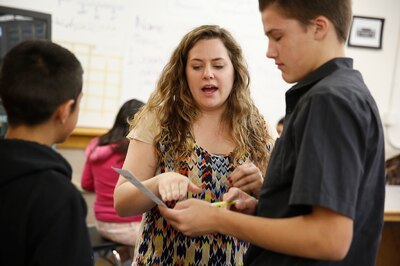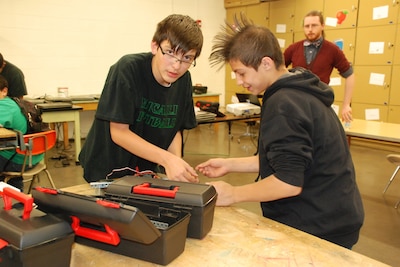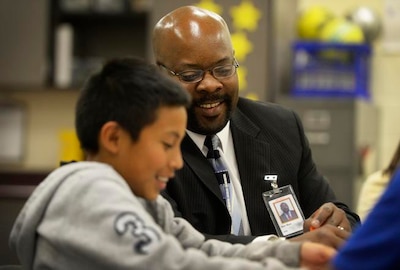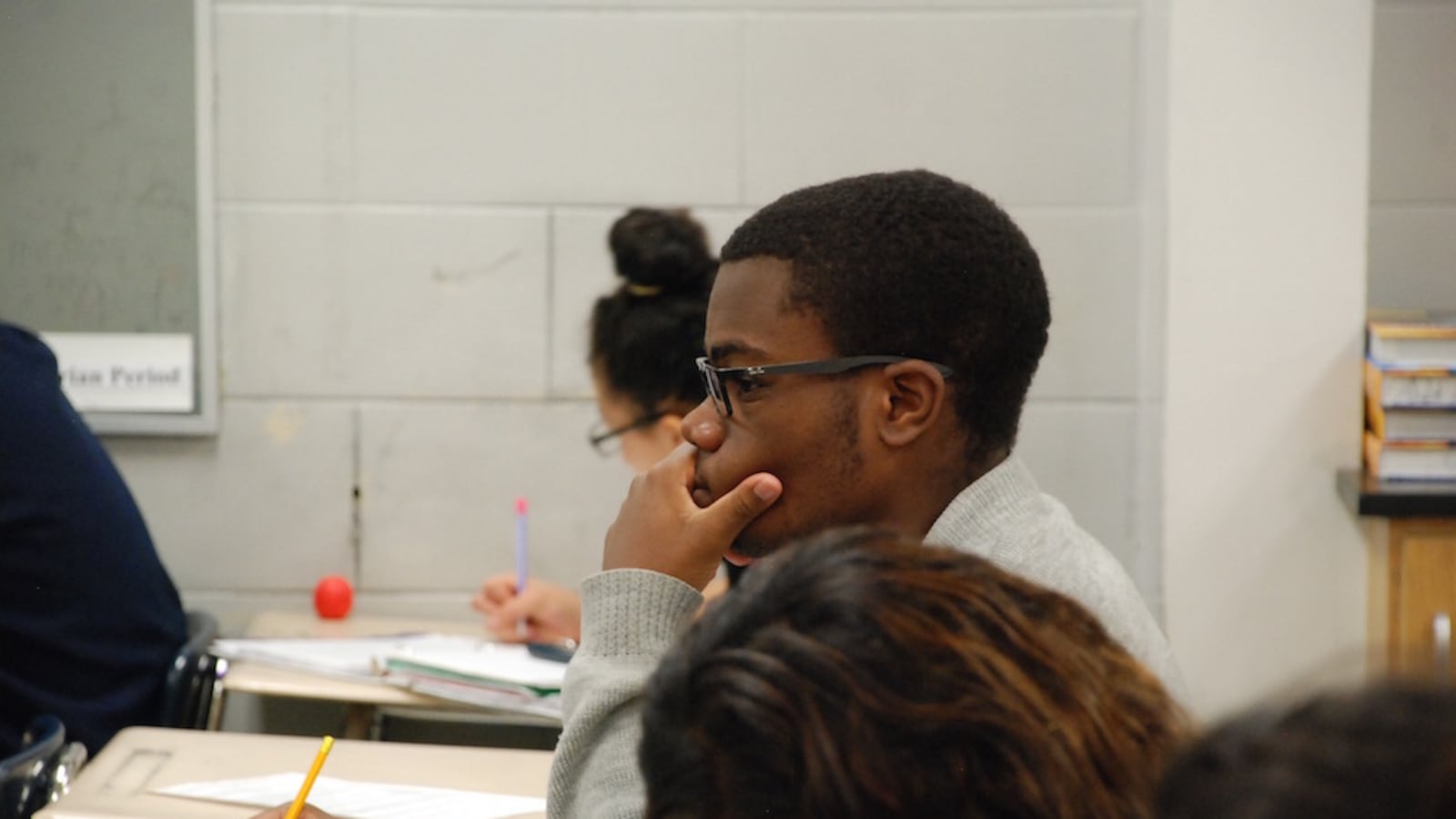Colorado’s effort to boost student learning by allowing low-performing district-run schools additional freedoms from state and local bureaucracy appears not to be working as well as hoped.
Since 2010, only three of the 18 failing schools granted “innovation status” under a 2008 Colorado law have improved student results on annual standardized tests enough to jump off the state’s accountability watch list, according to a new report from the Colorado Department of Education and additional state data reviewed by Chalkbeat.
The report and Chalkbeat analysis come as the State Board of Education is preparing to grant more failing schools innovation status in an effort to boost student achievement.
In July, the state’s school accountability clock turns back on after a one-year pause due to a change in the tests used to rate the quality of schools.
These schools, many of which serve some of the state’s poorest students, have been the lowest performing schools in the state for six years running. And despite previous efforts and millions of dollars in investments from the state and federal governments, the schools have failed to rally.
Some 30 schools that serve 13,000 students from every corner of the state are expected to face sanctions next year if they do not improve. Those sanctions could include being turned over to a charter school operator or closed.
But according to a committee of education experts commissioned by the state, most of the schools shouldn’t be shut or converted to charters. Instead, the group urged, they should be allowed to remain under district management with innovation status. That would allow the schools increased decision-making authority over curriculum, teacher hiring and firing, and budgeting.
Some schools — including the Roncalli STEM Academy in Pueblo — already have innovation status.
“I’m very wary of using innovation as a turnaround strategy,” said Robin Lake, executive director of the Center for Reinventing Public Education, a think tank at the University of Washington. “If a school has gotten to the point of being in the lowest 5 percent, usually there is something going on that is very hard to repair.”
Because so few chronically low-performing schools with innovation status have made meaningful improvement, some education reform activists, state officials and State Board of Education members are concerned the state is about to do more harm than good.
“This is not OK,” said Angelika Schroeder, a state board member and Boulder Democrat who has raised questions for several months now about innovation status as a turnaround effort.
A history in innovation
In 2008, Colorado became the first state in the nation to codify in state statute school-level autonomy for district-controlled schools. The law, which passed with bipartisan support, was celebrated as a major education reform victory.

Since then, other states such as Tennessee and cities including Boston have taken steps to provide schools with some flexibility from state regulations.
But Colorado’s law goes further than most, Lake said.
The state’s new innovation law quickly became a go-to school improvement strategy in Denver Public Schools, the state’s largest school district. No other district has more innovation schools than Denver.
The results are mixed. The only three schools to improve in the entire state — Ashley, Green Valley and McGlone elementary schools — are in Denver. But Denver still has another dozen innovation schools on the state’s accountability clock.
Not all innovation schools in Colorado use the law for school improvement efforts. Ten Falcon 49 District schools in El Paso County use the innovation law to create education programs with specific focuses such as STEM or international studies that stretch from kindergarten through graduation.
A tale of two schools
There’s no explicit reason why some innovation schools have seen improved student learning while others have not. But researchers and state officials have a few good guesses.
It comes down to the quality of the plan, how the school is using its waivers from rules, leadership and the relationship between the school and the district.
“Sometimes autonomy and a chance to innovate can be a good thing for a school that needs a fresh start,” Lake said. “But the test should be, ‘Does the school have a convincing plan that will result in something for kids very soon?’ When you’re dealing with low-performing schools, that’s not the time you just start pulling ideas out of a hat.”

Green Valley Elementary School in Denver’s far northeast corner is one of only three Colorado schools to use innovation status as a turnaround effort and succeed.
“You can’t leave anything up to chance. That opens the door to failure,” said TJ McManus, the school’s principal. “You can’t plan too much.”
McManus started at Green Valley five years ago as its assistant principal. She was part of a new team to reboot the school using the state’s innovation laws. The principal at the time had a year to plan a vision for his school, hire a new staff, and develop the curriculum and instructional methods those teachers would use to boost test scores.
Within three years, the school climbed from the state’s lowest school rating to the highest.
McManus credits a consistent leadership team, hard-working teachers and methodical planning.
That’s not to say Green Valley has not evolved since it relaunched in 2010, McManus said. Both the school’s curriculum and discipline code are drastically different compared to when the school first opened.
“We look a lot different, but we’re very intentional about what we do,” McManus said.
Marci Imes, principal of the Roncalli STEM Academy in Pueblo, agrees planning is paramount. But she had to learn that the hard way, she said.
Roncalli was the state’s lowest performing middle school in 2014, the last year data for which data is available. It is also one of the state’s innovation schools that has not improved academically.
“Year one was crazy,” said Imes, who served as the school’s assistant principal at the time. “Although it was a great plan, it wasn’t laid out clearly. … We tried to do it all at once. We quickly realized that couldn’t happen.”
When Imes took control of the school in 2014, she scaled back the school’s ambitions and focused on just a few efforts including the school’s culture and its instructional approach. This year, school officials focused on increasing the complexity of reading and math assignments.
“Like every school, you learn what you need to tweak each year,” she said.
Imes said her school’s innovation status has allowed her to better train teachers to focus on building relationships with students and understanding the state’s academic standards. It’s also allowed for more tutoring.
Retaining teachers is still a struggle for Imes, but she hopes when new testing data is released this summer Roncalli will have moved the needle.
“What I do know, with everything we put in place this year, the kids really, really felt more comfortable going into the assessment,” she said.
Pushing innovation as turnaround
For months, the Colorado Department of Education, the State Board and some school superintendents have debated whether the state’s school innovation and accountability laws work in harmony or are in conflict.
Aurora Public Schools Superintendent Rico Munn has been a leading voice in that conversation.

Last summer, the State Board gave Munn its blessing — with caveats — to pursue innovation status for a cluster of failing schools in the Denver suburb. As Aurora developed its plans, it became unclear whether the State Board would accept the school redesigns as a turnaround plan, flustering Munn.
Under the innovation law, the State Board of Education must approve any plan forwarded to it so long as board members believe the plans won’t decrease student achievement and are fiscally responsible.
Some believe that’s too low of a bar for the state’s most challenging schools.
State Board of Education Chairman Steve Durham said not all innovation plans are created equally. He said he might advocate for a change in the law to allow the State Board more authority to reign in poorly executed innovation plans.
“I think districts are looking at them as panacea and they certainly are not,” he said.
In March, Munn sent a letter to Education Commissioner Rich Crandall posing dozens of questions about how the state plans to navigate the two laws, especially where they conflict.
Among his questions: what law will the State Board use to approve innovation plans, which education department office will vet Aurora’s plans, and what is the criteria for a turnaround plan under the state’s school accountability law.
Only some of Munn’s questions have been answered.
At the State Board’s May meeting, Senior Assistant Attorney General Tony Dyl told the State Board that it has the authority under the state’s accountability law to reject innovation plans that it believes would not improve student achievement and could add stipulations to existing innovation plans like those just approved for Aurora.
A higher bar
In an effort to ensure innovation plans the State Board approves under the accountability law can make a difference, the state’s school improvement office will review the plans for quality.
The evaluation will focus on a variety of issues including school leadership, instructional changes and data systems, said Peter Sherman, the state’s chief school improvement officer. Whether the schools will take his office’s advice is unclear.
Sherman’s office has already provided feedback to Aurora and Pueblo City Schools, which also hopes to create its own innovation zone to improve six schools that have run out of time. Three schools — Roncalli and Risley middle schools and the Pueblo Academy of Arts — already have innovation status and are among those that have failed to improve.
Superintendent Constance Jones, in her second year leading the Pueblo school system, said she hopes the schools working more closely together, coupled with an additional $2.5 million in staff and resources, will be able to drive changes through the district.
“We don’t see these schools or collection of schools working in isolation, but working closely with the total district,” she said. “I feel very solid about what we have in place in able to move our schools forward.”
Perhaps the most important unanswered question is whether the State Board will have the political will to compel schools and districts to make drastic changes in a state with strong local control laws.
Some school leaders have already threatened lawsuits if they believe the State Board violates their constitutionally protected local control of schools.
“It remains to be seen,” Schroeder said, “what we have the courage to do.”

